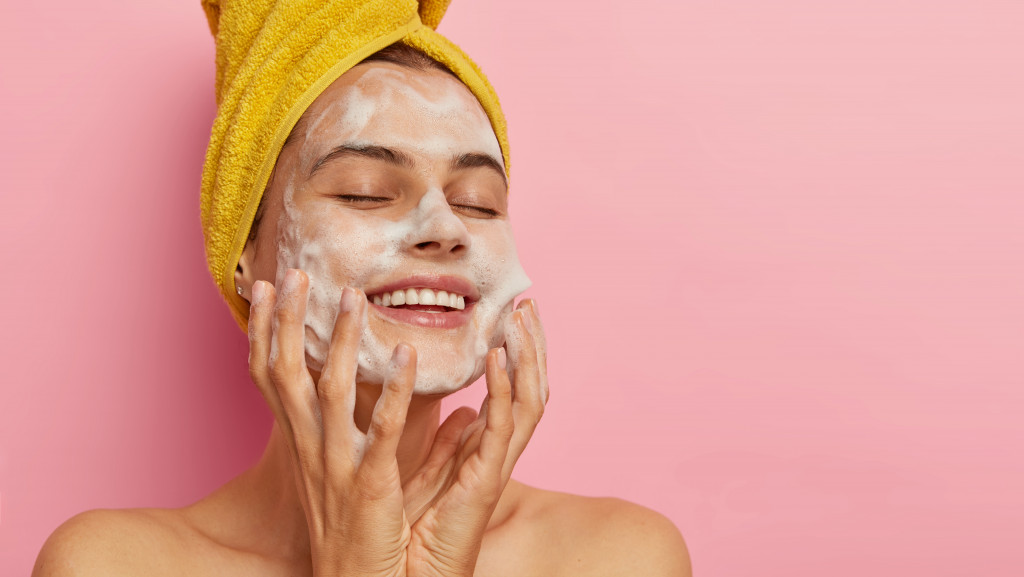We all want to have perfect, glowing, and radiant skin, and that’s why we all turn to skincare products to help us achieve it. Ideally, we should all have a comprehensive skincare routine to keep our skin healthy.
But with the growing range of skincare products on the market right now, it’s easy to get lost on which one you should use first and how to layer them on your skin correctly. Do you start with the cleanser? Or do you go in with the serum first?
To help you out, here is a quick guide on the different types of skincare products and how to apply them in order:
Cleanser
The first step in any skincare routine should always be to clean your face. You need to free your skin of oils, dirt, makeup, debris, or any impurities that may have built up throughout the day. A cleanser is one of the universal skincare products without which no skincare routine can begin or be complete. But you should know that there are different types of skin cleansers. Here’s a quick rundown of what they are:
- Oil Cleanser — The best option for people with dry or normal skin types. Oil cleansers help to dissolve all the sebum and dirt on your face without stripping away the natural oils that keep your skin healthy.
- Gel Cleanser — The perfect cleanser for people with combination or oily skin. Gel cleansers help to get rid of excess oil without over-drying your skin.
- Foam Cleanser — These are good for people with combination or oily skin. But unlike gel cleansers, foam cleansers help deep clean your pores and remove all the dirt, oil, and impurities trapped inside.
- Cream Cleanser — Cream cleansers are perfect for people with dry or sensitive skin. They help to hydrate and nourish your skin while cleansing it at the same time.
Toner
The next step in your skincare routine should be to tone your skin. Toning helps to restore the skin’s natural pH balance and provides a refreshing feeling. It also preps your skin for the next step, which is applying serum or moisturizer. Just like cleansers, there are different types of toners that you can use depending on your skin type.
For people with dry or sensitive skin, choose a hydrating toner that’s alcohol-free. If you have combination or oily skin, go for a toning mist or lotion that contains ingredients like witch hazel or Tea Tree Oil. These ingredients will help to control excess oil and sebum production.
Serum
Serums are concentrated doses of active ingredients that help to target specific skin concerns. They are usually applied after toning and before moisturizing. The type of serum you’ll need depends on your skin concern. For example, choose a serum containing Hyaluronic Acid or Vitamin if you want to reduce wrinkles and fine lines.
Eye Cream

Eye cream is essential in any skincare routine, especially if you’re concerned about dark circles, puffiness, or fine lines and wrinkles. They do an excellent job of hydrating and nourishing the delicate skin around your eyes. Eye cream is typically lighter in consistency than facial moisturizers, so the soft skin around your eyes can easily absorb it.
Spot Treatments
If you have any specific skincare concerns that you want to target, then the next step is to apply a spot treatment. Spot treatments are skincare products that target blemishes or acne spots specifically. They usually contain active ingredients like salicylic acid or benzoyl peroxide, which can help dry out pimples and reduce redness. You’re sure to have a clear face when using spot treatments, and results are quick to show.
Moisturizer
Moisturizers help hydrate your skin and keep it supple and soft while locking in all the previous layers of skincare you applied to your face. If you have dry skin, it’s important to choose a moisturizer that’s rich in emollients and humectants to help combat dryness. And if you have oily skin, choose a lightweight gel or lotion moisturizer that won’t clog your pores too heavily.
Sunscreen
Last but not least, always apply sunscreen as the final step in your skincare routine. It’s essential for protecting your skin from the sun’s harmful UV rays. Choose a sunscreen with an SPF of 30 or higher, and make sure it’s broad-spectrum to protect your skin from UVA and UVB rays.
Now that you know the different steps in a skincare routine, it’s time to put it into action. Just remember to tailor it according to your skin type and concerns. With a little effort and dedication to stick to your skincare routine, you’re sure to have healthy and happy skin in no time!
